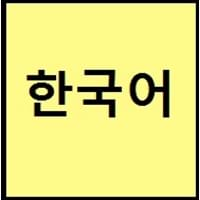Korean vs Navajo
Countries
China, Jilin Province, North Korea, South Korea, Yanbian
United States of America
National Language
North Korea, South Korea
United States of America
Second Language
Not spoken in any of the countries
Not spoken in any of the countries
Speaking Continents
Asia
North America
Minority Language
Japan, People's Republic of China, Russia, United States of America
Not spoken in any of the countries
Regulated By
The National Institute of the Korean Language
Not Available
Interesting Facts
- Korean has borrowed words from English and Chinese.
- Korean has two counting systems. First, is based on Chinese characters and numbers are similar to Chinese numbers, and second counting system is from words unique to Korea.
- Navajo language is tonal language, as it heavily relies on pitch to distinguish between similar words.
- Navajo ethinc group is 2nd largest Native American group.
Similar To
Chinese and Japanese languages
Apache Language
Derived From
Not Available
Not Available
Alphabets in
Korean-Alphabets.jpg#200
Navajo-Alphabets.jpg#200
Writing Direction
Left-To-Right, Horizontal, Top-To-Bottom
Not Available
Hello
안녕하세요. (annyeonghaseyo.)
Yá'át'ééh
Thank You
감사합니다 (gamsahabnida)
Ahéhee'
How Are You?
어떻게 지내세요? (eotteohge jinaeseyo?)
Ąąʼ haʼíí baa naniná?
Good Night
안녕히 주무세요 (annyeonghi jumuseyo)
Yá'át'ééh hiiłchi'į'
Good Evening
안녕하세요 (annyeonghaseyo.)
Yá'át'ééh ałní'íní
Good Afternoon
안녕하십니까 (annyeong hashimnikka)
Yá'át'ééh
Good Morning
안녕히 주무셨어요 (An-yŏng-hi ju-mu-shŏ-ssŏ-yo)
Yá'át'ééh abíní
Please
하십시오 (hasibsio)
T'aa shoodi
Sorry
죄송합니다 (joesonghabnida)
Not available
Bye
안녕 (annyeong)
Hágoónee’
I Love You
당신을 사랑합니다 (dangsin-eul salanghabnida)
Ayóó ánííníshí
Excuse Me
실례합니다 (sillyehabnida)
Shoohá
Where They Speak
South Korea
Arizona
How Many People Speak
Not Available
Dialect 2
Gyeongsang
Navajo2
Where They Speak
South Korea
New Mexico
How Many People Speak
Not Available
Dialect 3
Hamgyŏng
Navajo3
Where They Speak
China, North Korea
Utah
Speaking Population
Not Available
Native Name
한국어 (조선말)
Diné Bizaad / Dinék'ehjí
Alternative Names
Hanguk Mal, Hanguk Uh
Navaho
French Name
coréen
navaho
German Name
Koreanisch
Navajo-Sprache
Pronunciation
Not Available
Not Available
Ethnicity
Koreans
Navajo people
Origin
Before 1st century
1500 CE
Language Family
Koreanic Family
Dené–Yeniseian Family
Subgroup
Not Available
Athapascan
Branch
Not Available
Not Available
Early Forms
Old Korean, Middle Korean and Korean
No early forms
Standard Forms
Pluricentric Standard Korean, South Korean standard and North Korean standard
Navajo
Language Position
Not Available
Signed Forms
Korean Sign Language
Navajo Sign Language
Scope
Individual
Individual
ISO 639 6
Not Available
Not Available
Glottocode
kore1280
nava1243
Linguasphere
45-AAA
No data available
Language Type
Living
Living
Language Linguistic Typology
Subject-Object-Verb
Subject-Object-Verb
Language Morphological Typology
Agglutinative
Fusional, Polysynthetic, Synthetic
Korean and Navajo Language History
Comparison of Korean vs Navajo language history gives us differences between origin of Korean and Navajo language. History of Korean language states that this language originated in Before 1st century whereas history of Navajo language states that this language originated in 1500 CE. Family of the language also forms a part of history of that language. More on language families of these languages can be found out on Korean and Navajo Language History.
Korean and Navajo Greetings
People around the world use different languages to interact with each other. Even if we cannot communicate fluently in any language, it will always be beneficial to know about some of the common greetings or phrases from that language. This is where Korean and Navajo greetings helps you to understand basic phrases in Korean and Navajo language. Korean word for "Hello" is 안녕하세요. (annyeonghaseyo.) or Navajo word for "Thank You" is Ahéhee'. Find more of such common Korean Greetings and Navajo Greetings. These greetings will help you to be more confident when conversing with natives that speak these languages.
Korean vs Navajo Difficulty
The Korean vs Navajo difficulty level basically depends on the number of Korean Alphabets and Navajo Alphabets. Also the number of vowels and consonants in the language plays an important role in deciding the difficulty level of that language. The important points to be considered when we compare Korean and Navajo are the origin, speaking countries, language family, different greetings, speaking population of these languages. Want to know in Korean and Navajo, which language is harder to learn? Time required to learn Korean is 88 weeks while to learn Navajo time required is 88 weeks.





